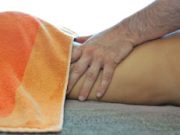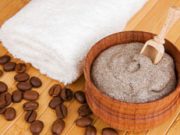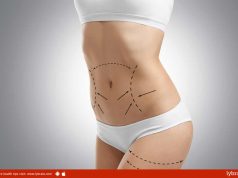
With the increasing awareness about obesity and diseases related to this condition, more and more people are thronging the gyms, or trying other weight loss methods. It is very easy to determine your body mass index and relate the findings to evaluate your weight. You just have to do some calculations based on a given formula and interpret the result as per the BMI chart. The four categories as per the BMI chart are: underweight, normal weight, overweight, and obese. You can find out the category to which you belong, as per your score. However, it is not possible to find out the percentage of body fat, using the BMI chart. A body fat scale is useful for this purpose.
Ways to Measure Body Fat
The most common tools and methods that are used for measuring the body fat are, Near Infrared Interactance (NIR), Dual Energy X-ray absorptiometry (DXA), calipers (skinfold measurements), and hydrostatic (underwater) weighing. NIR is based on infrared spectroscopy, and the percentage of body fat is calculated on the basis of resultant figures. DEXA is basically a scanning tool to determine the bone density, but it is also useful for determining the level of body fat. Calipers measure body fat, according to the skin fold thickness, at various sites, like the abdomen and chest. Hydrostatic weighing is based on the principle that a person with a low body fat weighs more under water, and vice-versa.
All these body fat monitoring tools have many disadvantages. While the results of NIR and calipers are not considered accurate; DEXA and underwater weighing are very much expensive, and may not be available everywhere. Nevertheless, DEXA and underwater weighing are considered the most accurate methods of measuring of body fat. Despite being accurate, these tools are not commonly in use, due to their high costs.
Body Fat Scale
Nowadays, body fat scales are commonly used for measuring and monitoring body fat percentage. These scales use a technique called Bioelectrical Impedance Analysis (BIA). Use of this tool involves circulation of a low level of electric current through the body. An electric current can pass easily through muscles that contain fluids, whereas fat tissues show some resistance. More resistance to the electric current means the presence of more fat tissues and vice-versa. The speed of the passage of current through the body is calculated, to determine the density of the body fat; which is then interpreted in conjunction with other factors, like the weight and height, to evaluate the body fat percentage. While some advanced body scales can calculate the final figure on their own; others provide values that have to be interpreted.
Pros and Cons
The speed of passage of electric current can be influenced by many factors, like amount of water in the body, temperature of the body, and recent physical activity. So, there are doubts regarding the accuracy of the results. Factors like age, gender, and race, are not taken into account. Even though some of the scales can automatically consider these factors, the results are only rough estimates.
However, the advantage of this tool is its easy availability, as compared to others, like DEXA and hydrostatic weighing. Body fat scales are cheaper too. Once bought, they can be used regularly.
Tips for Optimum Use
In order to get accurate results from a body fat scale, you must know how to use it in a proper way.
- Don’t compare your results with that of your friends. Compare the results with your own standards, and measure your progress regularly.
- Always remember to adjust the machine according to your profile.
- Try to use the scale at the same time everyday. If possible, use the machine at the same room temperature, everyday.
- Avoid physical activities and water consumption, before the test. Clean the footpads before using the scale.
- Always try to buy the best among those available in the market. The expensive ones are likely to be more efficient.
- If needed, you can purchase scales with multiple user memory. Some models can store profiles of more than ten people.
- You can compare the results of the scale, with other tools, like calipers.
In short, body fat scales are easily accessible devices to determine the body fat percentage. If used in the proper way, they can be of great help in monitoring the fat content of your body.







































